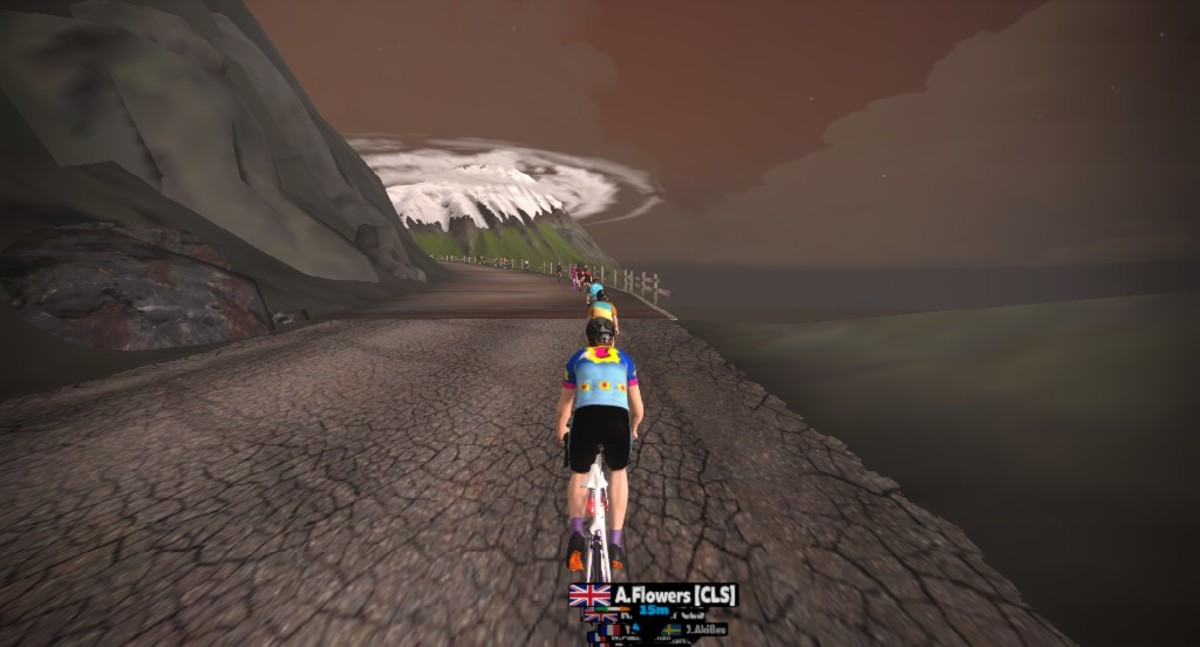Restoring an Old Bike to New-like Condition
Thrill DS21 Dumpster Bike Find
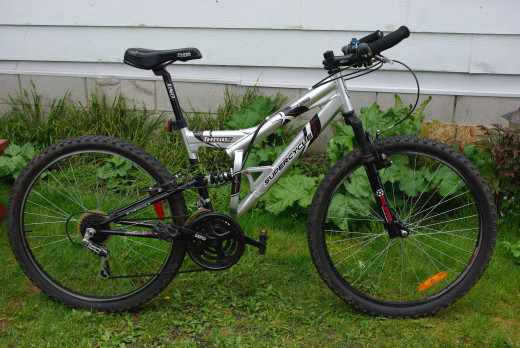
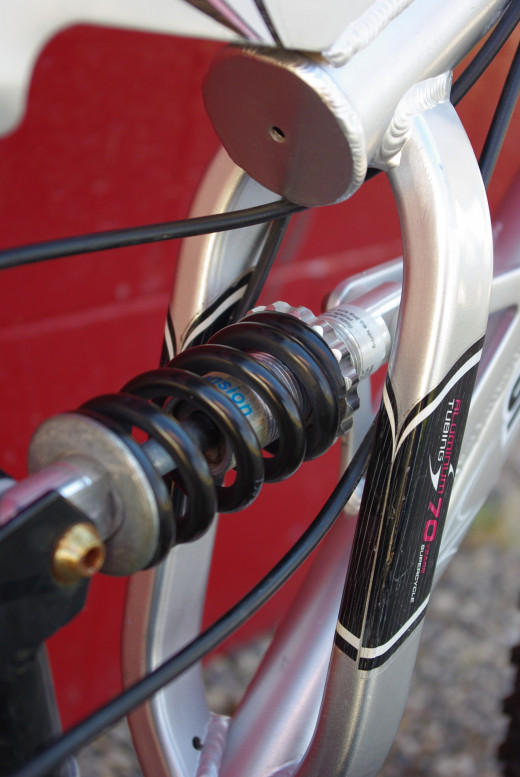
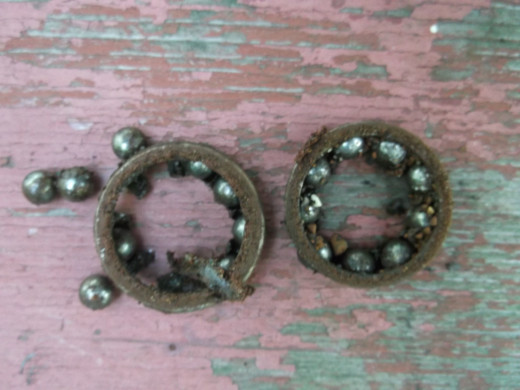
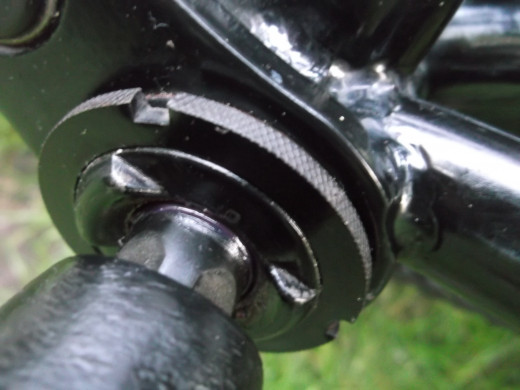
Setting Up a Used Full Suspension Mountain Bike
By Steve Robson
A used bike is a great only if it can be tuned to ride with a great feel to it. The more complex the bike, the more moving parts that need the attention of needing adjustment. In 2010, I found a Canadian Tire full suspension in a dumpster. Other then a damaged rear deralleur, the bike was basicly in solid good condition. It did not look like it but I saw a working bike with a lot of detailed work on it. For a fraction of the cost of bike new, I fixed and tuned it into smooth running bike that runs like new.
One of the first items I look at is the condition of the chain. The chain on this bike was rusty. It took a bit of work with some oil to get it into smooth running condition. After about two years of mild use, it is showing signs of wear and willl need to be replaced at some point but for now it works OK.
When I first got the bike, the one reason it was a good repair bike was the fact that a second bike in the pile had a damaged frame but had a good rear derailleur. This quickly taken off to get the DS repair bike back on the road. A few cables needed replacing to get the gears working again. This was the only money put into it at this point. The only other item looked at was the condition of the wheels. Other then a bit of truing the wheels up, the bike was ready for it's first ride. I had looked at using the other donor bikes wheels but the original where in better shape.
The front shock fork was frozen up from moving. The rear shock was set on a very loose setting. This created a very interesting ride quality. The bio-pacing problem really came play. It took a lot out of the rider when the bike was ridden. It felt a lot like being both pushed and pulled while pedaling the bike. I found it to be very tiring to use after a while. Coming from very rigid road bike frame design, the differences was night and day between the two design types.
The first major adjustment to be done at this point was to readjust the rear shock to higher tension setting. A ring to tighten spring is placed on shock unit but the frame design makes readjusting it difficult. I used screw driver and hammer to rotate the threaded ring to tighten up the spring. It was very tight and hard to move at first. I own another DS mountain bike that is far easier to work on. Even with this work the dumpster bike had a bit of bio-pace feel to it still.
About a year after getting the bike, I wanted bike to ride better. The one item I had not looked due to the lack of crank puller (a bike tool that allows one to pull off the crank arms) was the povit point on the frame. It is located near the bottom bracket of the frame. There is a fastner located there to tighten up the pivot point. When it is loose, the rear drive train section acts as I described in the beginning of this article. There a loose puch/ pull feel that takes away from a quality ride that could be had. After buying a replacement crank puller I could take off these parts to tighten up the pivot point. It only took a quarter turn to tighten this section back up. This was the last major change on the bike. It really helped the bike feel like a new off the shelf bike. Minor adjusting to the rear shock helped fine tune the into very ridable machine that is now far less tiring to ride on. These bushing parts could be hard to place if worn out altogether making it wothless to repair at this point.
About one and a half years after getting the bike, I sprayed the front shock with some oil to help loosen it up a bit. It has over a short amount of time the shock tubes now move and this detail helped the ride feel that much more. Seeing how the bike was found, I feel really good how this old bike feels like a new bike now.
Although not directly related to a wear problem on the bike, the seat post was on the short side for getting proper fit on the bike. A longer aftermarket seatpost was bought to replace the factory original part. It allowed the seat to be raised the 3/4 of an inch needed gain proper seat height. The bottom section of the post was fully inserted into the frame making it safer to use now.
Another smaller detail that had to looked at was the bottom bracket bearings wore out. I picked up a set of new BB bearings and when I heard the original making grinding sounds, the replacement set was put in. It made another big difference in the pedalling action of the bike. The bearings only cost .99 cents. The bike uses the older bearing cup system to mount separate bearing into place. If a newer bottom bracket cartage type design where to used, the cost of replacing range from $15.00 to over $100.00 depending on the quality being looked at. You need to know the thread size being used and to know that the entire unit needs replacing. A special tool is needed as well to remove this part from the bike, adding to the cost of repairing and owning to old abandoned bike being repaired.
Here is a cost break down of the parts needed to get this bike back into running condition.
Cables- $4.99 by 4= $19.96 plus taxes
Seat Post- $15.99 plus taxes
Bottom Bracket bearings- .99 Cents plus taxes
Crank Puller- $10.00
Total- $66.90
The original cost of the bike new was $250.00. This was the quarter of the cost it new. Although the cost was low to fix it up, the costs can easily add up to equal the original cost of the bike. One as to watch what is spent on restoring a old abandoned bike. Items like bike tools can be seen as an investment for the long term while the parts of the bike are a one time only purchase.
One factor to look at it the amount of time spent on repairing it. I spent about 2 hours on the original repairs with an additional 2 hours over the next 2 years fine tuning the bike into its current form.With a bit of knowledge of bike repairs knowing what to look for in a quality of a used machine, one can gain a like-new bike with a little time and money. It is much more rewarding to ride on recycled/ repaired bike rather then buying one new. At least for myself, I tend to do a lot of the same fine tuning on a new bike as well. The only difference is the lack of replacement parts needed on new bike other then those needed to help get it fit better.
One last note. If you are not doing the work yourself, the cost of a bike shop to got the bike repaired with outstrip the cost of the original bike meaning buying a new one is better deal. You need to do these types of repairs yourself to make second hand dumpster worth while getting up and running again.



